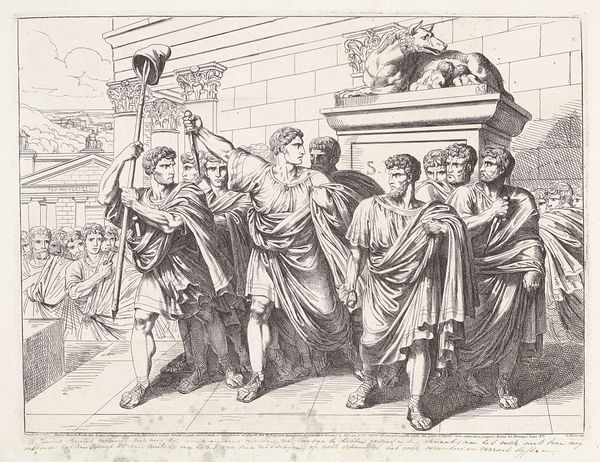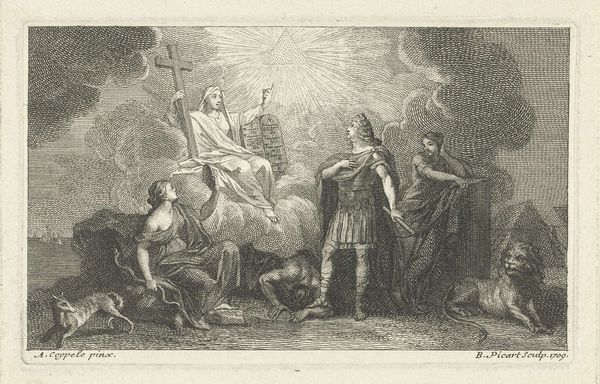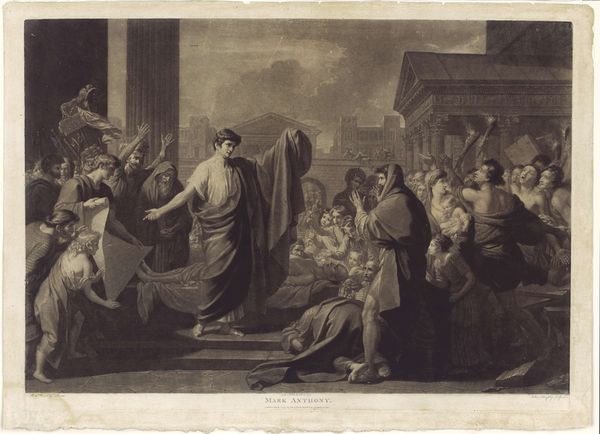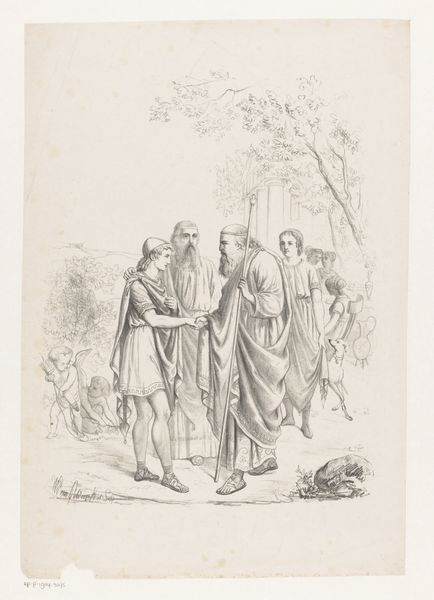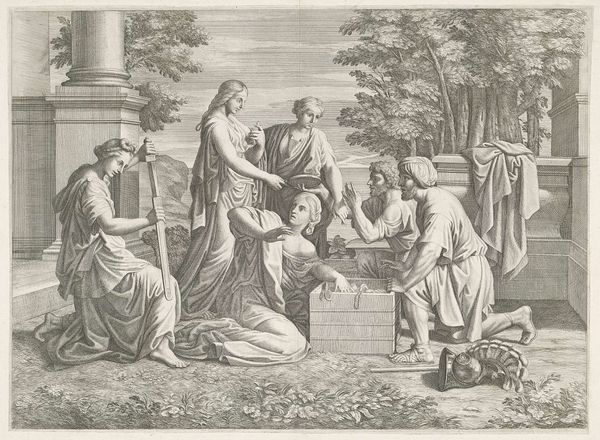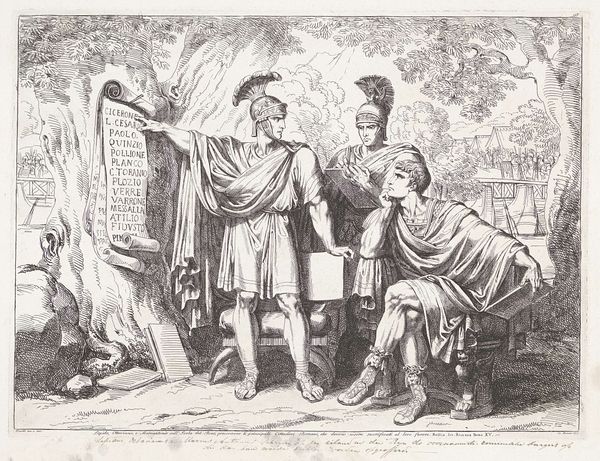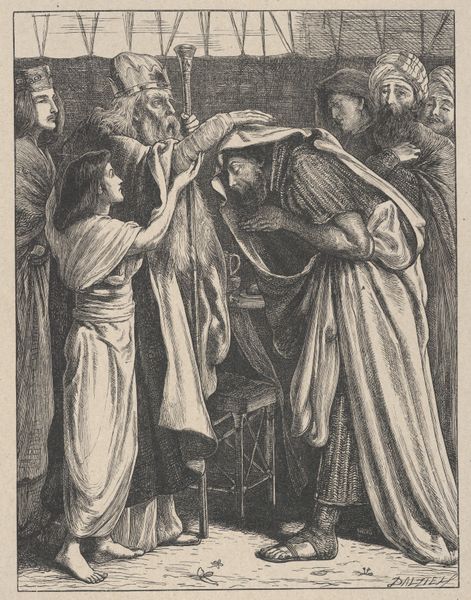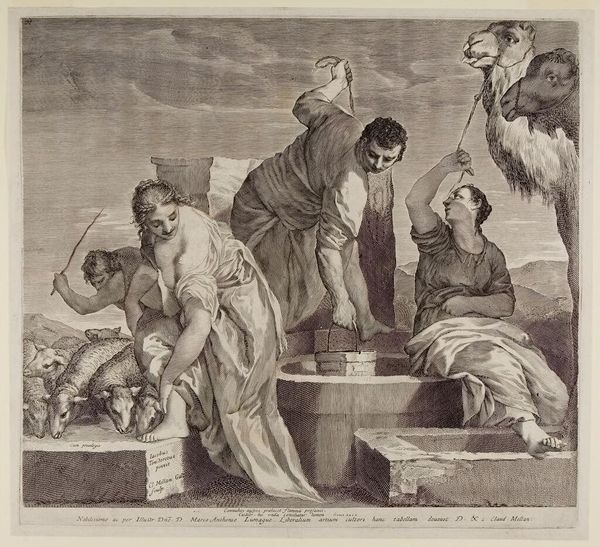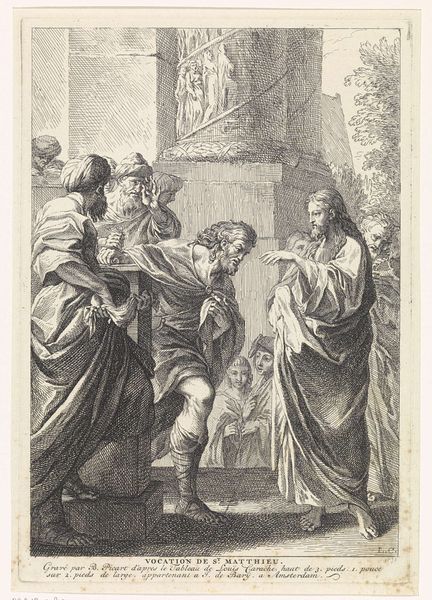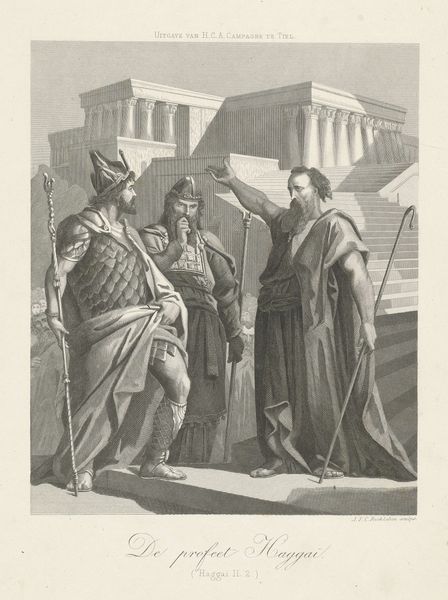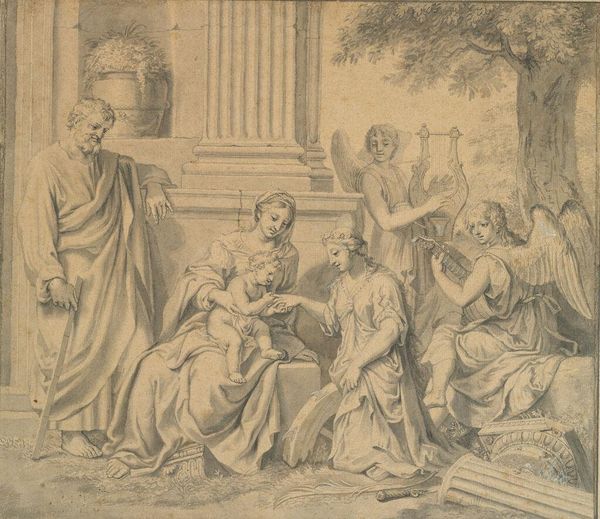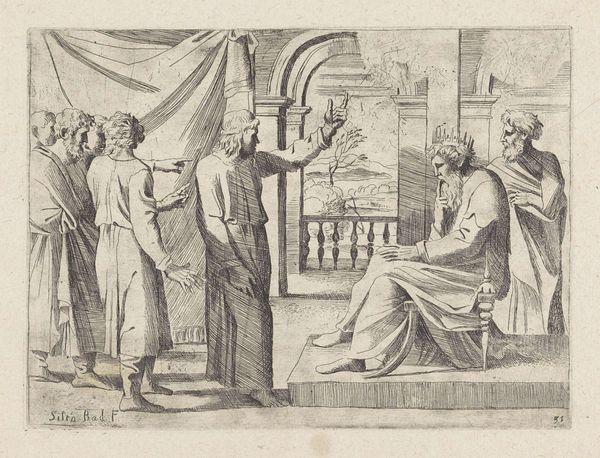
Fotoreproductie van een illustratie van drukte op straat bij een huisdeur before 1855
0:00
0:00
drawing, pencil
#
drawing
#
narrative-art
#
pencil sketch
#
landscape
#
classical-realism
#
charcoal drawing
#
figuration
#
pencil drawing
#
pencil
#
portrait drawing
#
genre-painting
#
history-painting
#
academic-art
Dimensions: height 30 mm, width 60 mm
Copyright: Rijks Museum: Open Domain
Editor: Here we have an undated pencil drawing – "Fotoreproductie van een illustratie van drukte op straat bij een huisdeur," so a photoreproduction of a street scene drawing – created sometime before 1855 by an anonymous artist. It feels almost theatrical in its staging. How do you interpret the gathering of figures here? Curator: This evokes for me a very specific genre within nineteenth-century art: historical genre painting. Academic art prized these imagined scenes of everyday life in classical antiquity. The attention to costume, architectural details, even the animals, reflects a desire to make history feel accessible and real for the viewer. But it's also a constructed reality, right? It's offering us a vision of the past that's filtered through a particular lens – a lens informed by the present-day social and political concerns of the artist and their audience. What strikes you about their staging? Editor: It's like a stage, definitely. All these people in a tight space around a doorstep. Almost as though this is one pivotal, important moment of the day, like a significant social interaction is about to take place. It feels… contrived? Curator: Exactly. Consider the institutions that would have supported this kind of work: academies, museums, wealthy patrons. They played a crucial role in shaping artistic tastes and dictating what was considered "high art." Genre scenes allowed for social messaging that history painting maybe couldn't provide as readily. Why might such an everyday encounter in the ancient world resonate so strongly with a 19th century audience, do you think? Editor: Perhaps, the artist tried to show values they considered important at that time. Maybe even project it onto historical societies as ideal? Curator: Precisely. The drawing is not a literal representation, but rather a projection of contemporary ideals onto a romanticized vision of the past, subtly shaping viewers’ understandings of both history and their own place within society. Editor: It’s amazing to see how seemingly simple scene actually layers in so much cultural significance from a particular time. Curator: Indeed. Even seemingly simple drawings offer an opening to considering social forces behind art.
Comments
No comments
Be the first to comment and join the conversation on the ultimate creative platform.
